Categories
BougeRV 240Wh Portable Power Station, Solar Generator with AC outlet, JuiceGo LiFePO4 Generators for Emergency Power Supply, Camping, Travel, Home Backup, and RV
39.99 $
Description
Reviews (7)
Rated 0 out of 5
7 reviews
Rated 5 out of 5
0
Rated 4 out of 5
0
Rated 3 out of 5
0
Rated 2 out of 5
0
Rated 1 out of 5
0
7 reviews for BougeRV 240Wh Portable Power Station, Solar Generator with AC outlet, JuiceGo LiFePO4 Generators for Emergency Power Supply, Camping, Travel, Home Backup, and RV
Clear filters Add a review Cancel reply
Category: MEGA DEAL



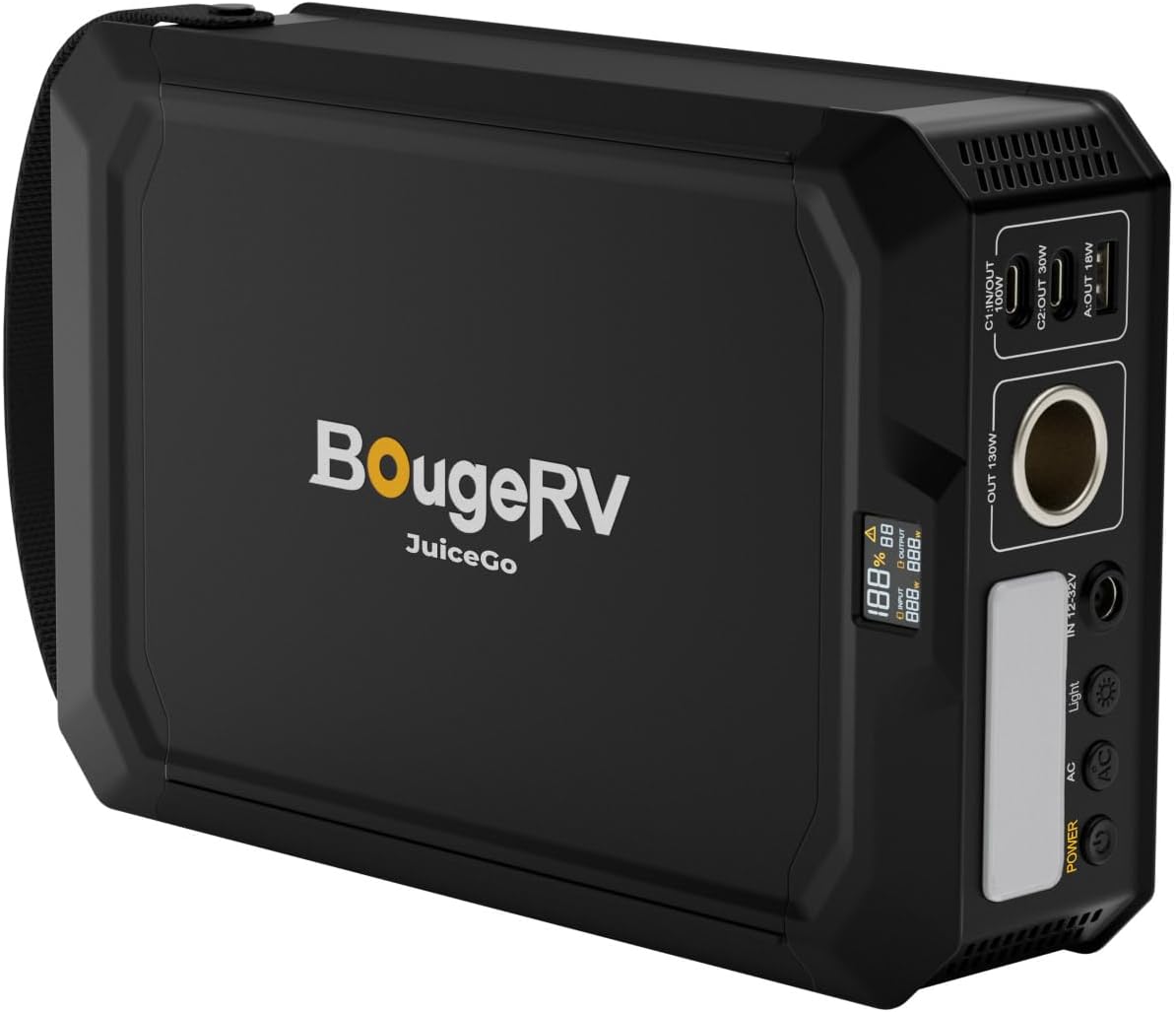
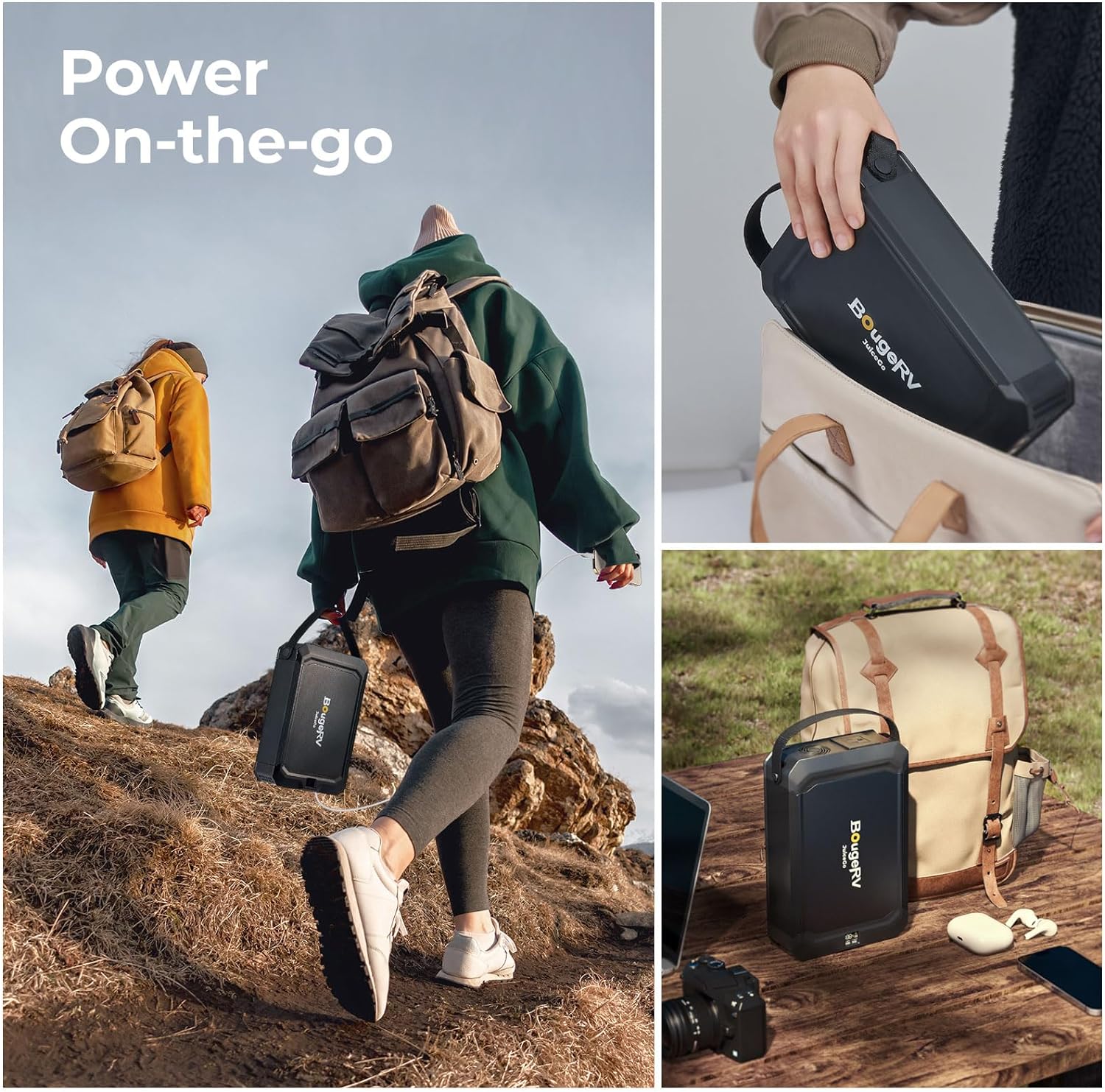

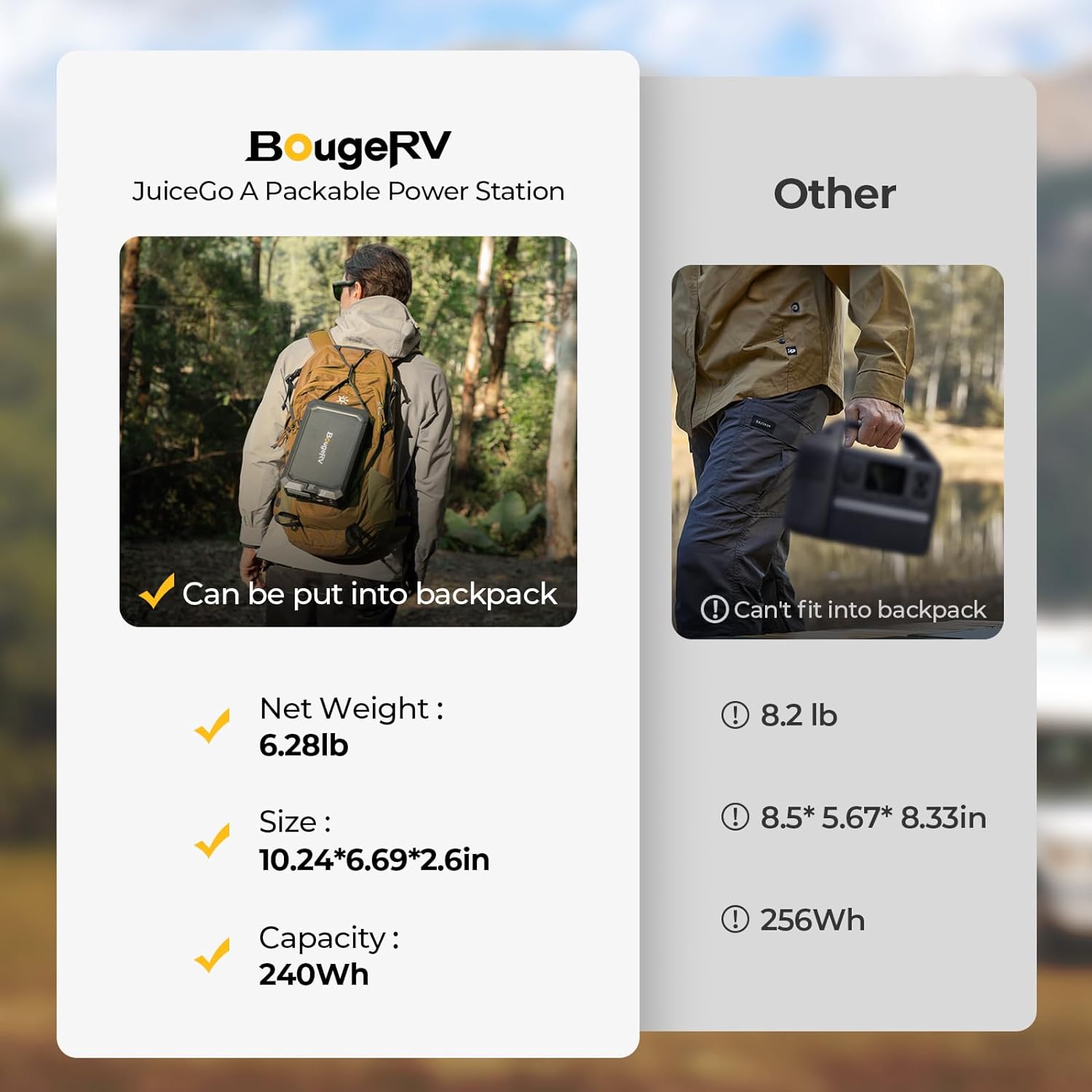
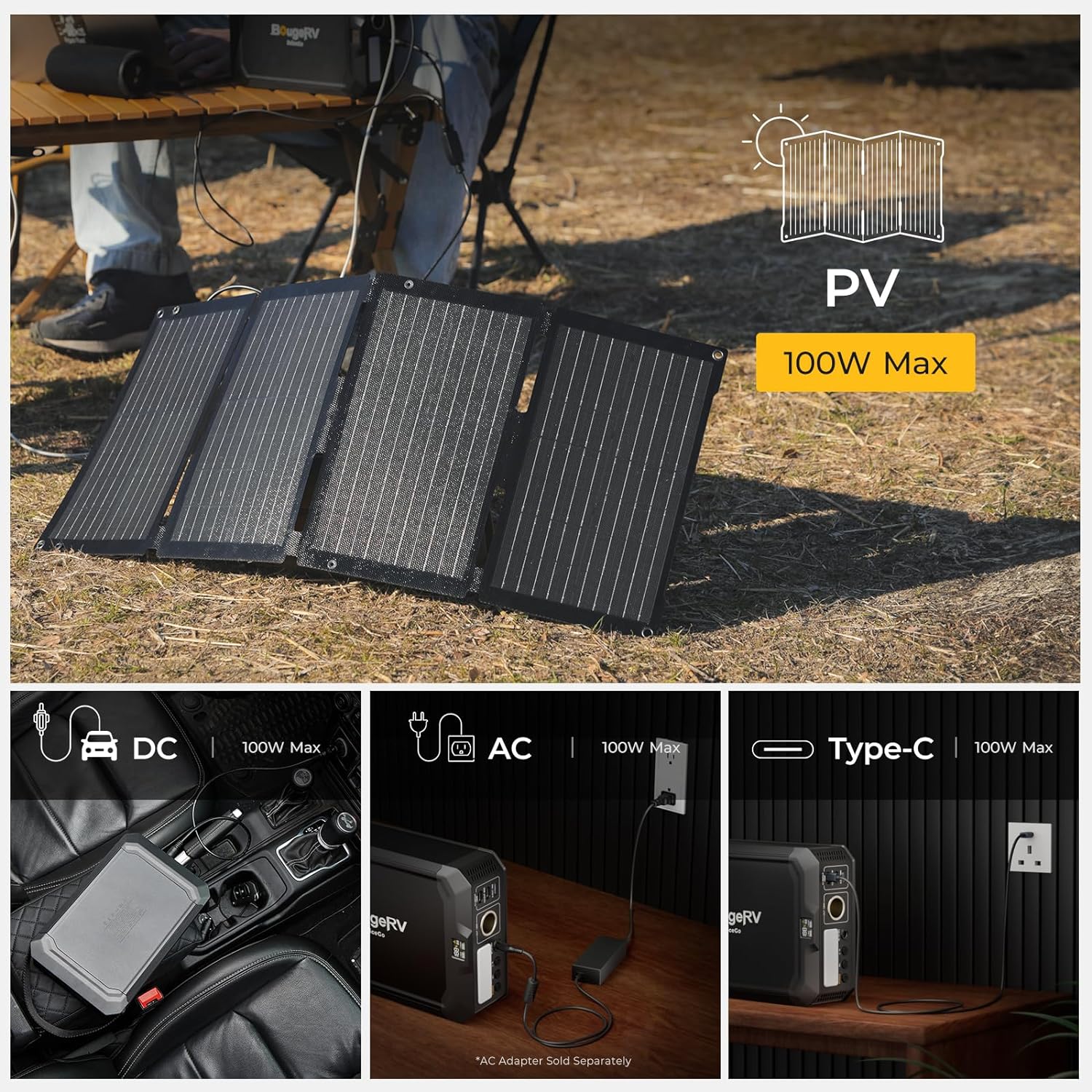

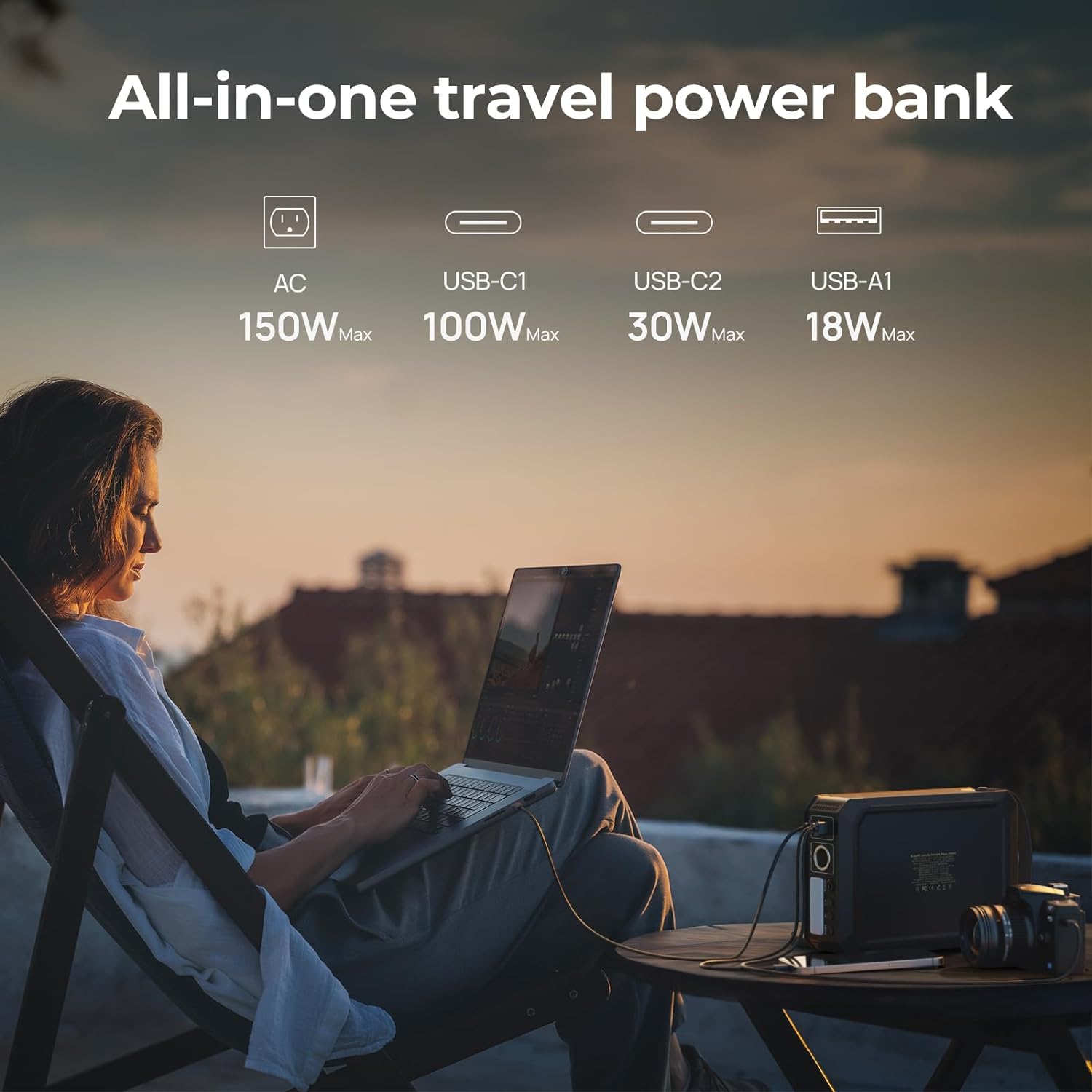
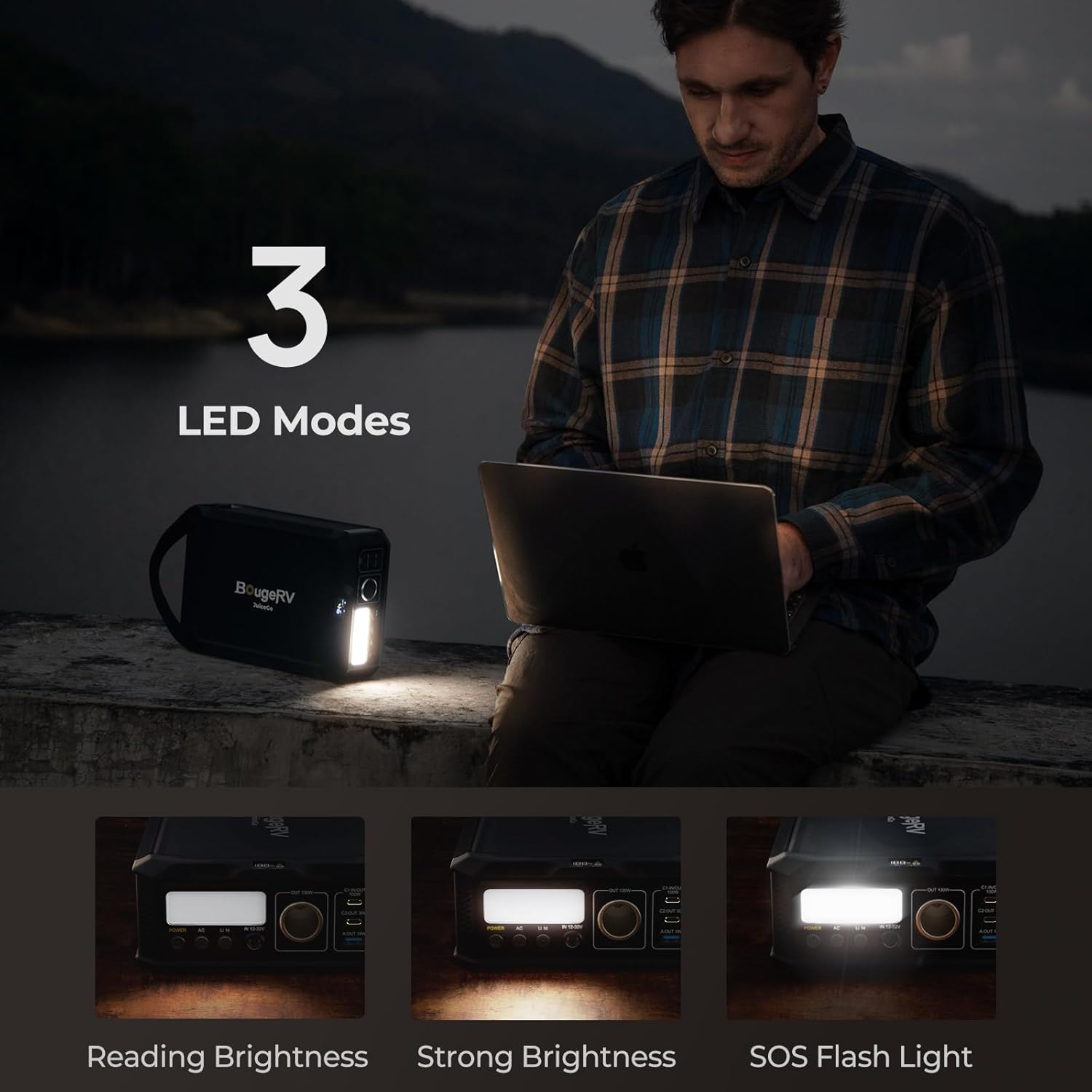















Frank S. –
Portable and good power reserve of 240Wh; display is showing power level in percent.
The BOUGE RV JuiceGo 240Wh power station is a quite portable power station designed with a slim form-factor and balanced weight of just a little over 6 pounds which is quite good for the 240Wh power class.
For outdoor activities like camping, this power station can easily be moved around (it comes with a fabric grip), taking it to where it is most convenient to use and where USB or even AC output is needed — I am thinking about charging your handheld devices, cameras, laptop, lights etc.
To me, the portability of the JuiceGo and its 240Wh power reserve makes it ideal to have it in the car for recharging my cameras, drone, and devices, therefore not only on camping trips.
I connected my car fridge to the JuiceGo 240Wh via the car cigarette lighter adapter with no issues.
I have tested the JuiceGo with a 100W solar panel and it charged the power station with 70 Watts or more, depending on the sun and cloud situation which was varying a lot during the charging process.
I have calculated, that depending on the incoming wattage, the JuiceGo should charge in 3-5 hours with an average sunny sky.
A solar panel gets connected to the DC7909 port on the front side of the JuiceGo. If your solar panel comes with different connectors, I think it is quite easy to find adapters on Amazon.
The power station offers 3 light modes: SOS, low, and high output — the highest level of output draws about 2W power from the battery, whereas the low mode and SOS draw just 1 Watt, according to the JuiceGo’s display.
The display shows the charging power level in percentage which is always a feature I appreciate over the simple bar indicators.
The display shows also the incoming and outgoing power in Watts. While I am charging the JuiceGo via Solar (or otherwise like via the included cigarette lighter cable), I can also simultaneously charge my devices.
The cigarette lighter adapter cable connects to the JuiceGo via a DC7909 barrel connector port — that DC (in) port is rated as 12V-32V incoming voltage.
Some tech specs derived from the manual:
The battery capacity is 240Wh (16v/15000mAh).
The JuiceGo 240 has a
USB-C in/out for up to 100W;
it has a USB-C (out) up to 30W;
it has a USB-A (out) with 18W;
It has a car cigarette lighter output with up to 130W output (13V/10A).
There is 1 AC outlet with 150W max output – I do not find information about the type of sinus wave (pure/modified).
I want to mention that the marketing description says that BOUGERV expects a 10 year lifetime out of the battery which would be great, even we might not really use the devices from nowadays in 10 years.
GQReview –
Handy if you are on the go
The first day I got this product, I plugged it in to a standard outlet and let it get to 100%. Since then, I’ve left this in the trunk of my car and it has become very handy in situations where I could use a regular outlet on the go. I take this with me when I go flying my drone out of nature so that when I finish flying at one site, I can plug my drone into this to get charged while I go to my next site. Having a flashlight built in is also handy if you ever were to need it. You also can turn off and on the AC power port to determine whether you need to plug something in and start charging now or later. Overall since I first charge the product, it’s still remains at about 90% and it hasn’t gone down at all. I will also state that knowing this has a solar option does give me more peace of mind that I can leave this in the sun slowly get back some charge should I not get that option for a while. The other benefit is it can be plugged in using a car adapter to charge, so just leaving it in your trunk or back seat with a cigarette outlet can help charge this product up. Can’t say I will go anywhere with my car without bringing this with me
Grace –
Great portable power
This portable power station is very easy to use. The quick start guide is easy to understand. I use the cigarette lighter to charge the battery, but I also plan to buy the 100w solar panel to charge it. The light function is helpful to use the power station at night. The LCD display shows battery remaining, input, output power and an error code display. This power station is compact with a belt type fabric handle. It has worked flawlessly for me so far and with a five year warranty, I’m sure it will continue to do so.
Feeferlump –
Takes forever to charge
Been plugged into a home charging system and charging for 2 full days and still not at 100% – charged faster with the car charger, but I can’t drive around for hours just to make it charge.
Joe –
Battery doesnât charge at 100W
The battery itself doesnât charge at 100W under any conditions. The best I could get is around 60W-70W that was momentary. I tried on PV, 12V DC in, and on USB-C PD2 using 140 watt power brick and 240 watt cabling. I need 45 watts continuous output and when it gets even slightly hot. The input watts drops to around 25 watts. Let me know if someone else has different results than this.
UPDATE: I finally got it to charge at 100 watts but need this exact cable: T4 EPR PD 3.1+PPS. There is only 1 cable on the market today that can do those specs. USB 4.0 240 watt/100 watt cables donât get anywhere close to 100 watt charge on this unit. Absolutely has to have a PPS chip in cable. PPS tech is very new and requires an entire separate microchip in the cable itself as itâs a rapidly oscillating computer controlled voltage with an advanced microchip that 99.999% of cables donât have. This is not clear anywhere in the instructions and absolutely needs to be.
Ric S –
Works great!
This power station is built MUCH sturdier than any other power station of similar capacity and form factor. Feels very solid and has a very sturdy carrying strap, perfect companion to my bougeRV 100 watt panel!
CEZ –
Sturdy Unit
I don’t know a ton about these types of power banks, but I’m pleased with how sturdy this item seems and the amount of power you this puts out. Although it is a bit pricier than comparable models. I noticed it took a very long time to charge via the USB outlet in my house (10w), but when hooked up to my car it changed much faster. I imagine if I charged it from my 10w outlet this thing would take atleaat 24hrs to fully charge. The ability to use this power bank while it’s charging is a cool feature that would enable you to hook this to solar and supplement some of the output. I don’t have a panel to hook it to just yet, but I will update accordingly. For now I’m happy to have a nice amount of backup power for camping or power outages.